| | français | | | english | | | deutsch | | | español | | ||||||||||
| home | CTBA Test | channel | technical | assembly | realisation | ||||||||
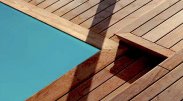 |
TECHNICAL PROCESS |
||
. The "outside parquet floor" (terrace, verandah, patio, deck, porch...) consists of wooden slats fixed on their support.
|
|||
THE SUPPORT |
The backing frame • Each installation is a particular case (framing skeleton, flag, pavement, slab, height variations....)
|
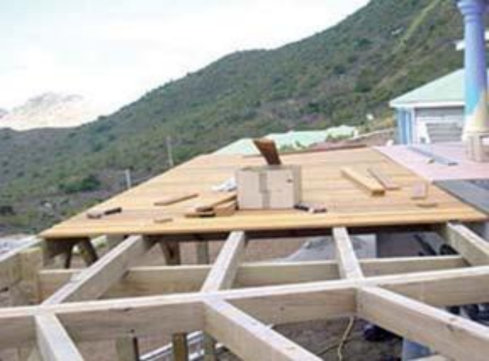 |
|||
|
Any support must be carried out in the code of practice : slope from 0.40 to 0.75 in per yard, rigidity of the support, adapted frame... I must fulfil the usual requirements in relation to the installation of backing frame (flatness, surface resistance, fissure's exemption, cleanliness...).
|
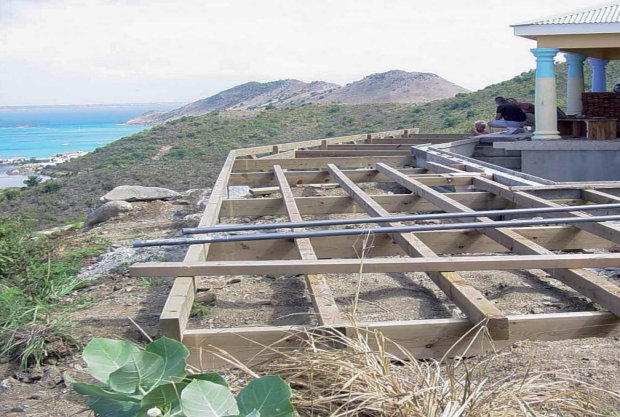 |
|||||||
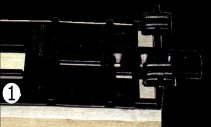 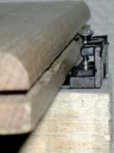 |
Laying precautions Plan regular plays of dilatation to prevent a possible later inflation (the Woodclip wedge : thickness 0.16 inchs inserted vertically and temporarily at the time of the laying constitutes a fast, precise and cheap solution). |
|||||||||||||||
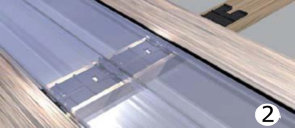 |
Slats will be fixed on the back frame by means of special wedges in order to carry out an invisible fixing. They fit in stop, upon the Woodclip wedge TO INSTALL WOODCLIP SYSTEM : IN ORDER TO FIX THE FIRST SLAT, CUT THE TWO SMALL TONGUES OF THE MOUNT
|
|||||||||||||||
|
||||||||||||||||
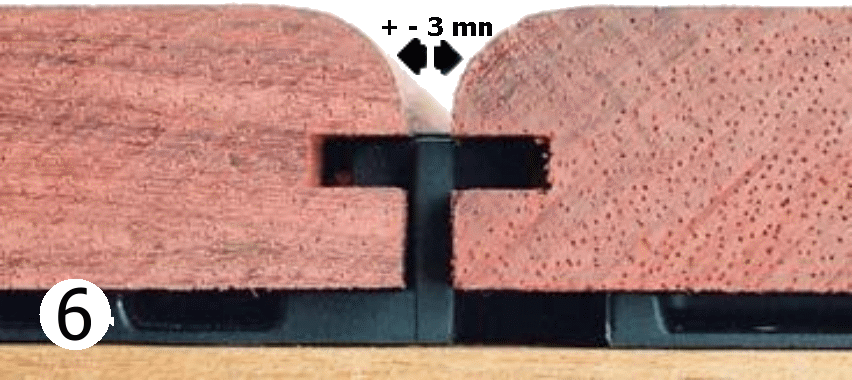 |
||||||||||||||||
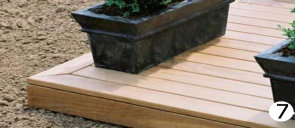 |
||||||||||||||||
MAINTENANCE • Wood selected and chosen does not require any safeguarding maintenance. |
original colour, it will be partially protected and waterproofed. However. Several months will be necessary to allow a treatment under the best conditions. |
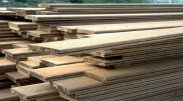 |
PHYSICAL PROPERTIES |
||
Our woods have been dried artificially, 15 to 16 % of humidity. You are advised to store them in a temperate place. Nevertheless, woods remain a “living” material, in some heat and air dryness conditions some slats might go down to a degree of humidity much lower and slightly contract themselves. |
|||
| Density at 12% : 0,67 Monnin Hardness at 12% humidity : 4,2 Coefficient of volumetric retractations : ,34% Tangential contractions: 4,7% Radial contractions : 2,6% Fibre Saturation point : 24%Stability : stable |
TEAK • Dark golden yellow ( turning a dark brown after sun exposures )
|
|||
| Monnin Hardness at 12% humidity : 15 Density at 12% : 0,86 kg/m3 Resistance to Fire : M3 Resistance to the attack of insects : excellent Resistance to mould : excellent |
IPE • Light to dark olive brown, sometimes with reddish or greenish reflections
|
|||
| Monnin Hardness at 12% humidity : 5 Density at 12% : 0,86 kg/m3 Resistance degree : SD3 Resistance to the attack of insects : good but still some risks… Resistance to mould : excellent |
L’ITAUBA • Olive-yellowish, becoming dark chestnut colour with the time and sun ( such as Iroko or Tatajuba wood,… )
|
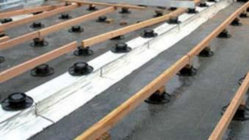




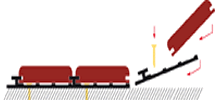
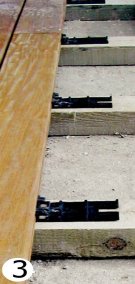
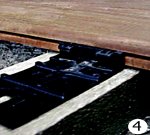
.jpg)